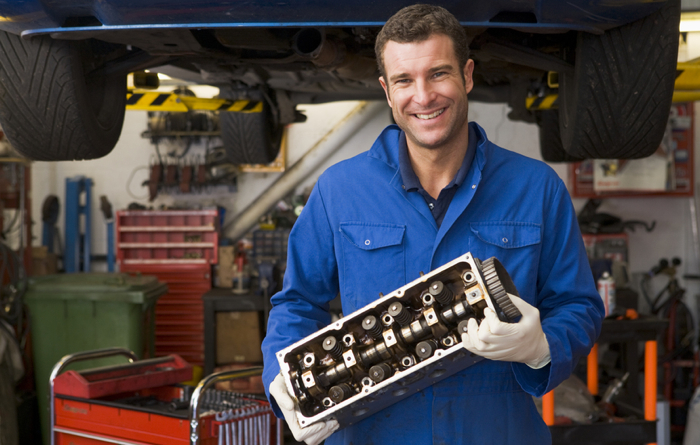You may have noticed that your customers are starting to get younger. That’s because millennials — the generation born between 1980 and 2000 — have entered their prime spending years. These younger buyers will be spending that money on all sorts of things, including engine and performance needs, and you’ll need to understand how this new crop of consumers operates to capture their business. Millennials are much different shoppers than their Gen X and Baby Boomer counterparts. Where older customers may have found you in years past through a billboard or listing in the phone book, millennials won’t know you exist unless you have a strong online presence.
When an engine rebuild becomes necessary, they’ll most likely whip out their smartphone and select a shop that comes up high in the search rankings, has positive reviews and offers good deals. Failing to address any of these components will eventually cost you business.
Here’s a look at how you can connect with these digital natives and convert them to loyal customers.
Shine Online
Everything starts with having a mobile-friendly, search-optimized website. Make sure your hours of operation, address and phone number are visible on the home page. It also doesn’t hurt to feature a solid offer up front along with a great review from a satisfied customer. When it comes to search-engine optimization, content is key. Google focuses on finding original, high-quality content, so go beyond the typical information and consider including engine-related articles. It also makes sense to customize your content to fit your market. If American engines are your core competency, create a landing page dedicated to those jobs with specific information and specials. That way, when someone types the keyword “American engine rebuild” and the name of the city where your shop is located, your name will come up first.
Build a Strong Reputation And Brag About It
According to Adweek, 93% of millennials usually read a review before making a purchase. As a result, failing to cultivate and showcase good reviews could put you at a serious disadvantage. I could write a separate article on the fine art of establishing a good reputation, but at its core, it comes down to providing exceptional customer service and convenience. When a potential customer calls to book a service, make sure the staff answering the phone is friendly and accommodating. Work around their schedule — not yours. When the customer walks in the door, welcome them to a clean shop staffed by friendly and knowledgeable people. Display your staff’s certifications and any accolades the shop has received in a prominent place to reinforce your credibility. As they say, you only get one chance to make a good impression.
If you’ve done your job, your customers shouldn’t have any problems providing a good review, and you shouldn’t have any problem encouraging such feedback — either through email reminders after their service or by asking them to fill out an online review during check-out. Don’t forget to stay active in platforms where customers are most likely to interact with you, such as Yelp and Google+. If you receive a bad review, respond quickly and pledge to do better in the future. Making an effort will go a long way in showing millennials that you care about customer satisfaction.
Communicate Effectively
Millennials are constantly plugged in and expect the businesses they interact with to stay just as connected. Shops that depend on outdated communication methods or don’t stay in touch won’t have much luck attracting and keeping millennials. For example, your current protocol may be to call and leave a message for a customer when his or her car or engine is ready for pickup. But, millennials often prefer a text or email message instead.
Social media is also crucial in spreading your message. Adweek reports that more than 90% of millennials are on Facebook, and 42% log on to the site daily. Facebook is a great place to start conversations, offer useful information about engine care, provide discounts or highlight positive customer feedback. You can also use Facebook to tout your commitment to community causes. In its 2013 Global Consumer Sentiment Survey, Boston Consulting Group found that just under half of the millennials surveyed said they try to buy from companies that are active in social causes and cite “supporting causes” as one of the most important ways brands can engage with them.
Follow Up
Retaining millennials is a challenge since they have so much information at their fingertips and are savvy about comparing their options. To build loyalty, show your appreciation. Send thank you notes after a service via text or email and offer specials that are good for returning customers only. Display your shop’s personality by sending out email newsletters that focus on people rather than promotions. Feature stories about your customers, your employees and the people you impact through your community contributions. Share videos of exciting shop news, such as new babies born to employees or work anniversaries. These efforts show the human side of your business — a key factor for millennials who deeply value authenticity.
Embracing technology, maintaining a strong reputation and establishing personal connections are the keys to reaching and retaining this next generation of customers.











